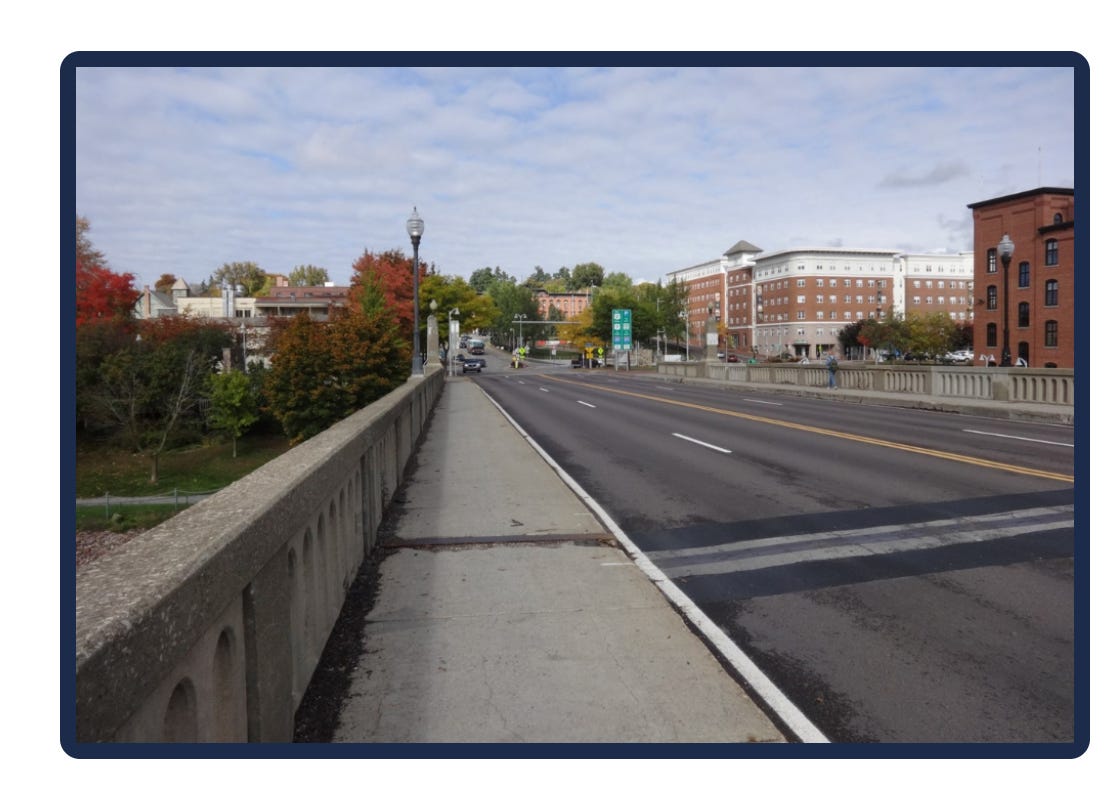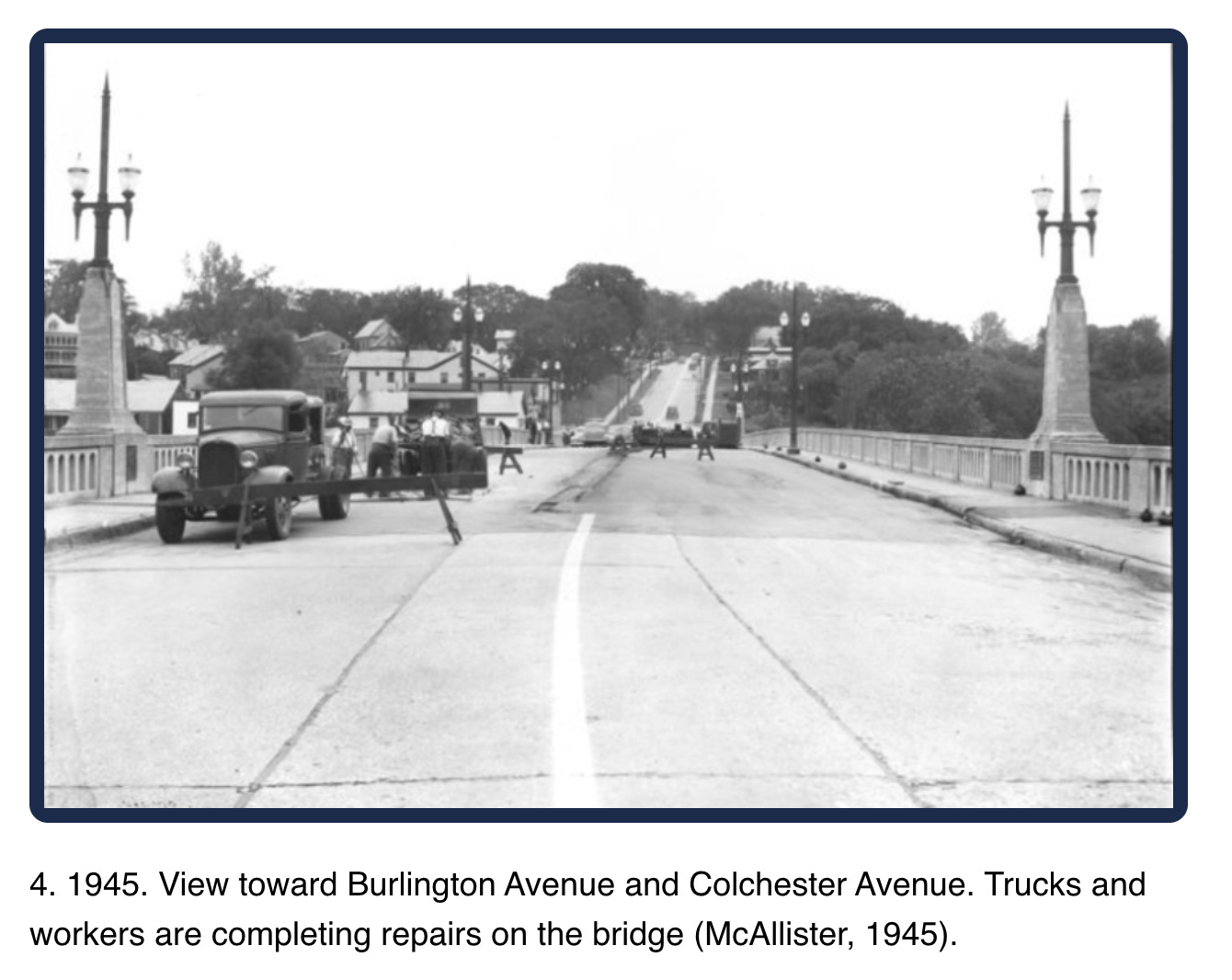"Functionally Obsolete" Winooski River Bridge to be Replaced With Federal Funding
The current bridge, a three-span steel girder structure, was hastily erected in just nine months after a devastating flood in November 1927 washed away its predecessor.
A vital artery connecting two of Vermont's most populous cities is set to be replaced, thanks to a significant infusion of federal cash. The Vermont congressional delegation announced today that it has secured a $22.7 million grant to replace the nearly century-old Winooski River Bridge, a structure that has stood since the era of trolleys and now serves as the sole direct crossing between Burlington and Winooski.
The funding, awarded through the U.S. Department of Transportation's Better Utilizing Investments to Leverage Development (BUILD) Grant Program and made possible by the Bipartisan Infrastructure Law, marks a pivotal moment for a crossing that has existed in various forms for over 200 years.
"Bolstering Vermont's infrastructure is crucial to ensuring the safety, security, and success of families, workers, and everyone traveling through the Green Mountain State," said Senators Bernie Sanders, Peter Welch, and Representative Becca Balint in a joint statement. "The replacement of the Winooski River Bridge will boost northern Vermont’s critical infrastructure, improve safety and accessibility, and make Winooski more resilient to extreme weather.”
The current bridge, a three-span steel girder structure, was hastily erected in just nine months after a devastating flood in November 1927 washed away its predecessor. Completed in August 1928, it was a modern marvel of its time, designed to carry a trolley line, two lanes for vehicles, and sidewalks. The reopening was a momentous occasion, celebrated with marching bands on both sides of the river, a testament to the crossing's importance.
This was not the first bridge at this location. Since the days of horse and buggies in the late 1800s, a bridge has spanned the Winooski River here, adapting to the changing modes of transportation. An early iteration featured two lanes for carriages and separate footpaths. This was later replaced by a truss bridge that accommodated both trolleys and the burgeoning automobile traffic of the early 20th century.
As the popularity of personal vehicles soared and trolley use declined, the tracks on the current bridge were removed, and it was repurposed to support four lanes of traffic. Today, it is a piece of critical infrastructure, carrying approximately 25,000 vehicles, up to 2,000 pedestrians and bicyclists, and several transit routes daily.
However, after nearly a century of service, the 1928 bridge is "functionally obsolete," according to transportation officials. Its narrow 10.5-foot travel lanes, lack of shoulders, and cramped 6-foot sidewalks create a barrier to safe and efficient multimodal transportation. While routine inspections by the Vermont Agency of Transportation (VTrans) confirm the bridge is currently safe, its deck is rated in "fair condition," and the structure as a whole is approaching the end of its service life.
The new bridge will be designed for the 21st century and beyond. Plans include wider lanes and shoulders for vehicles, and crucially, separated shared-use paths on each side for bicycle and pedestrian traffic. The project will also feature improved drainage systems to better withstand the kind of extreme weather events and flooding that have impacted Vermont in recent years.
"This announcement is crucial toward the successful funding package necessary to deliver this complex bridge project,” said Vermont Transportation Secretary Joe Flynn.
Governor Phil Scott also lauded the federal support. “Maintaining safe and reliable public transportation infrastructure is one of the most important responsibilities of any government,” he said. “I’m appreciative to our congressional delegation for bringing this much needed funding back home to Vermont.”
The overall project will also include improvements to the complex intersection on the Burlington side, involving Riverside Avenue, Colchester Avenue, Mill Street, and Barrett Street. The multi-year project will be managed by a team including VTrans, the City of Burlington, the City of Winooski, and the Chittenden County Regional Planning Commission, who have committed to engaging the public throughout the process. As the region prepares for this generational upgrade, the new bridge promises to honor its long history by continuing to adapt and serve the vital connection between two of Vermont's most vibrant communities.



